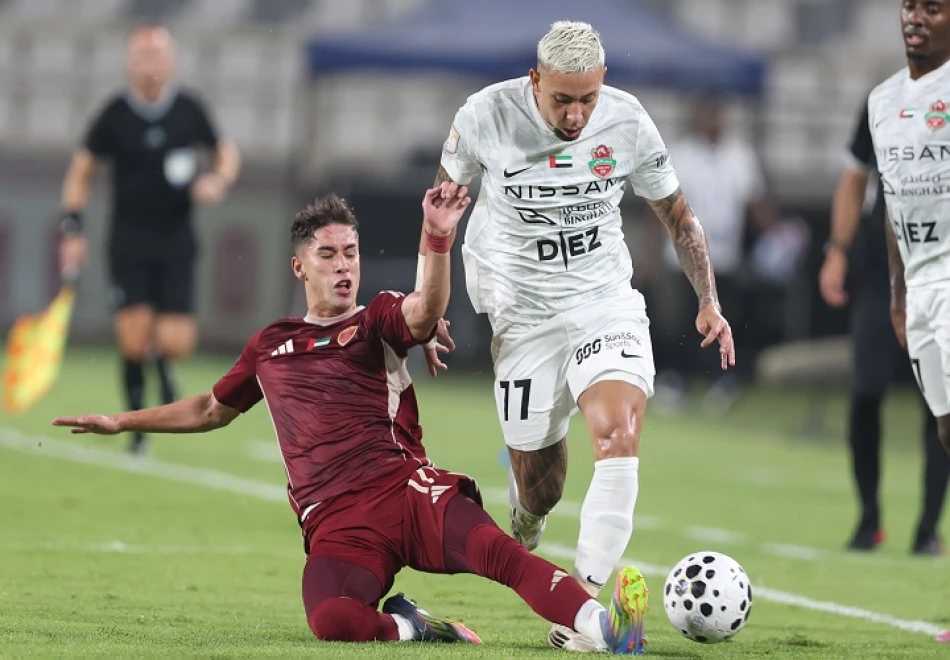
Innovative System Thwarts Infiltration, Resolving Refereeing Disputes at Al Ahly and Unity Summits
UAE Football League Embraces Advanced 3D Technology to End Offside Controversies
The UAE's ADNOC Pro League has introduced cutting-edge 3D camera technology to resolve offside disputes, marking a significant step toward more accurate officiating in Middle Eastern football. The move comes after controversial decisions in the opening round sparked widespread criticism, with Al Ain having three goals disallowed in a single match.
Technology Responds to Growing Referee Pressure
The UAE Football Association's referee committee implemented the new detection system during the league's second round, following intense scrutiny over officiating standards. The catalyst was Al Ain's frustrating encounter against Al Bataeh, where two goals by Togolese striker Laba Kodjo were ruled offside in the 5th and 60th minutes, while a third goal by Moroccan professional Nassim Chadli was disallowed for a handball violation.
The controversy highlighted the growing pressure on match officials in professional leagues across the Gulf region, where substantial investments in foreign talent have raised expectations for precision in crucial decisions.
Immediate Impact on Match Flow and Accuracy
Al Wahda vs. Shabab Al Ahli Test Case
The new 3D technology faced its first major test during Al Wahda's clash with Shabab Al Ahli, where referee decisions using the advanced cameras helped resolve what could have been another contentious situation. Al Wahda's Lucas Pimenta saw his 23rd-minute goal correctly ruled offside through the enhanced detection system, with the decision accepted by both teams due to the technology's clear visual evidence.
The match, which ended goalless, also featured two red cards - Shabab Al Ahli's Renan in the 83rd minute and Al Wahda's Lucas Pimenta in the 96th minute - demonstrating that while technology can resolve offside disputes, traditional officiating challenges remain.
Enhanced VAR Integration
In the Dibba vs. Al Ain fixture, Turkish referee Khalil Amoun showcased the technology's versatility by combining 3D offside detection with VAR reviews. The system was used to verify whether Dibba's Muhannad Ali's header had crossed the goal line in the 45th minute, while also correctly identifying another offside violation by Al Ain's Laba Kodjo in the 16th minute.
Regional Technology Race in Football
The UAE's adoption of 3D offside technology positions the league alongside other Gulf nations investing heavily in sports technology infrastructure. Saudi Arabia's Pro League has similarly embraced advanced VAR systems, while Qatar's infrastructure developments during the 2022 World Cup set new regional standards for match officiating technology.
This technological arms race reflects broader ambitions across the Gulf to establish their domestic leagues as premier destinations for international talent, requiring officiating standards that match global expectations.
Long-term Implications for Gulf Football
The successful implementation of 3D technology could influence other regional leagues to adopt similar systems, potentially creating a new standard for professional football across the Middle East. The technology's ability to provide immediate, visual confirmation of offside decisions addresses one of football's most persistent sources of controversy.
For clubs investing millions in foreign players, accurate officiating becomes crucial for protecting those investments and maintaining competitive integrity. The UAE's proactive approach suggests recognition that technological precision is no longer optional but essential for modern professional football.
The early success of the 3D system in reducing post-match controversies indicates that Gulf football may be leading a technological revolution that could influence officiating standards globally, particularly in leagues seeking to attract international talent and investment.
 Sara Khaled
Sara Khaled







